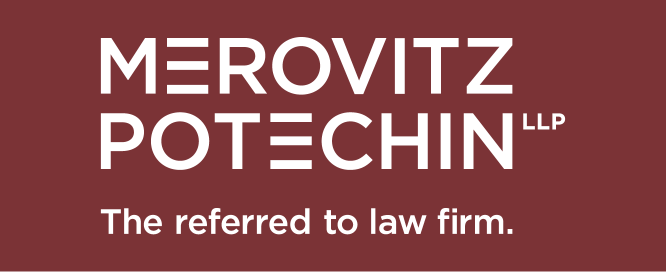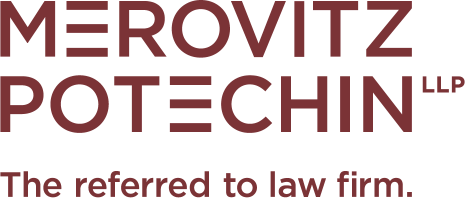Categories
Tips for the New Entrepreneur Part 2: Incorporation, Share Structure and Shareholders’ Agreements

This is the second blog of a new series entitled “Tips for the New Entrepreneur” aimed at providing a New Entrepreneur with practical tips and pointers for exploring legal issues when setting up and growing a new business. These blogs may also provide, for your convenience, key official sources of reference.
What Are The Main Differences Between Federal and Provincial Incorporation In Canada?
You can decide to incorporate your new company federally or provincially. Both types of incorporation will allow you to, for example, enter into contracts or sell goods and services in any provinces or territories in Canada.
However, you will also need to register your company – be it that you originally incorporated federally or provincially – in any other province or territory where you wish to set up an office or retail outlet, for example. More specifically, you will need to complete an Extra-Provincial Incorporation in any province or territory where you have actual facilities, employees or offices in that jurisdiction.
One of the advantages of incorporating federally is that it provides you with “increased name protection” which means that once you have registered your name, you can do business under the same name across Canada. This is in contrast with a provincial incorporation where there is no protection of your name outside of that province. It is also worthy to note that a federally incorporated company may also provide increased global recognition should it want to conduct business in other countries. Finally, the original filing of the Articles of Incorporation, or any additional amendment to the original Articles of Incorporation, as well any required annual filings can be done electronically through Corporations Canada website.
This being said, there are certain advantages to incorporating your business provincially. While the federal incorporation fees may be less initially – meaning $200.00 for online filing with Corporations Canada plus a minimal fee for a NUANS name search, compared for example to a one-time incorporation fee of $300.00 in Ontario – there is additional paperwork and extra long-term costs related to a federal incorporation. Specifically, you will need to file an annual return with associated annual fees of $20.00 (when electronically) and this every year during the entire existence of your company. Hence, if you plan to carry on business mainly in one province, for example in Ontario, you may decide for expediency and cost-related reasons to incorporate initially only in that jurisdiction. It is also feasible to first incorporate provincially and change to a federal incorporation at a later date when, for example, you wish to grow and expand your business on international markets or seek increased name protection and recognition.
What Should Be the Share Structure of My New Company?
When you decide to incorporate your new company, you must determine its share structure which is linked to making some decisions on the ownership of the company. A company’s ownership is divided into “shares” which typically corresponds to one “unit of ownership interest” in the corporation. A person who owns shares in the company is called a “shareholder”.
There are usually two main categories of shares that are usually defined in the Articles of Incorporation of the new company: (1) common shares; and (2) preferred shares (sometimes also called “preference shares”). In general, there are three types of rights or attributes associated with shares: (1) the right to vote; (2) the right to receive dividends; and (3) the right to receive the remaining property of the corporation upon dissolution. Not all rights have to apply to all classes of shares.
In summary, a company can have several “classes” of shares in each category. However, a company must have at the very least one class of shares, that are usually common shares, whereby the holders of these shares must at minimum have the right to vote at any meetings of the shareholders, receive any dividend declared by the corporation and receive the remaining property of the corporation on dissolution.
As a New Entrepreneur or founder, you may also wish to create a share structure comprised of several classes of shares that would allow you to provide different rights to the holders of the various classes of shares and plan ahead for future transactions. Some considerations when determining the share structure of your company are:
- Retention of control of your company
- Creation of a stock option plan to issue shares, for example, to key employees, directors, contractors or others
- Incentives to attract new investors and raise equity financing
- Tax considerations such as income splitting, capital gains exemptions
- Future reorganizations such as estate freezes, acquisitions and mergers
Do I Need a Shareholders’ Agreement?
A shareholders’ agreement is a binding contract, preferably in a written format, between two or more shareholders that governs the relationship between the parties, the management of the company as well as the ownership and transfer of shares. There are basically two types of shareholder agreement. First, a Unanimous Shareholders Agreement (the “USA”) is an agreement where all shareholders of a corporation become parties to the agreement. Pursuant to the Canada Business Corporations Act and the Ontario Business Corporations Act, the USA can restrict the powers of the directors to manage the affairs of the corporation by limiting certain of their decision powers. Consequently, it is worthy to note that under a USA, the shareholders may inherit certain rights, powers and duties, and associated liabilities, of the directors or Board of Directors. In contrast, a general or Non-unanimous Shareholder Agreement may be entered into among some or all of the shareholders when its purpose is not necessarily to restrict the powers of the directors. Irrespective of what type of shareholder agreement you contemplate, it is often a useful tool for privately held corporations where there is more than one shareholder, including when there may be more than one founder of a new company.
This is because one of the main goals for entering into a shareholder agreement is to anticipate potential future events or issues and determine how these matters will be proactively dealt with should they arise. The shareholder agreement is usually tailored to the type of business and its specific shareholders and investors’ requirements. In addition to defining procedural matters pertaining to the management of a company such as the frequency of shareholders’ meetings, a shareholder agreement can be used to deal with more substantive issues related to ownership and transfer of shares. Examples of various types of issues that can be addressed in such an agreement are co-founder disagreements through the inclusion of a pre-determined dispute resolution process, protection of minority shareholders’ rights, control of share issuances, transfers and dispositions, setting out voting thresholds and requirements for shareholders’ approval for certain fundamental corporate decisions or actions to be undertaken, as well as key provisions and restrictions in the event that an existing shareholder ceases to be a shareholder due for example to insolvency, retirement or termination as an employee, death or disability and loss of capacity. A shareholder agreement can also confer other rights, restrictions and obligations with respect to financing and contribution of funds, non-competition and non-solicitation provisions prohibiting shareholders from competing or taking clients or key employees from the company during their tenure and for a reasonable period of time thereafter.
In conclusion, it is believed that one of the main reasons to put in place a shareholders’ agreement is to encourage the shareholders to discuss any potential issues or problems and have in place a roadmap that clearly delineates possible solutions at the onset of the relationship and alleviate the risk of higher costs of resolving future disputes. In fact, a well-drafted shareholder agreement can be useful to supplement the legislative framework, the Articles of Incorporation and by-laws of a privately-held company.
Additional Sources of Reference:
- Steps to incorporating – Innovation, Science and Economic Development Canada – Corporations Canada website: https://www.ic.gc.ca
- Business services – Service Ontario (Start, dissolve and change a corporation): https://www.ontario.ca/page/business-services
- Ontario Business Corporations Act, R.S.O. 1990, c. B.16, Section 108: https://www.ontario.ca/page/start-dissolve-and-change-corporation
- Canada Business Corporations Act, R.S.C. 1985, c. C-44, Section 146: https://laws-lois.justice.gc.ca
If you are an entrepreneur looking for experienced advice on your best course of action regarding incorporation, contact the Business Law Team at Merovitz Potechin LLP.
The content on this website is for information purposes only and is not legal advice, which cannot be given without knowing the facts of a specific situation. You should never disregard professional legal advice or delay in seeking legal advice because of something you have read on this website. The use of the website does not establish a solicitor and client relationship. If you would like to discuss your specific legal needs with us, please contact our office at 613-563-7544 and one of our lawyers will be happy to assist you.






